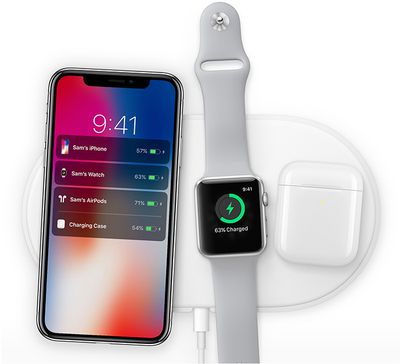Despite the promise of a 2018 release date, Apple's long-awaited AirPower wireless charging mat remains unavailable, and almost all mentions of the device were last week removed from its website. This has prompted speculation over what could be behind the delay – and even whether the AirPower, which was announced over a year ago, will ever see the light of day.

Previous reports have touched upon the technical issues Apple has run into with the AirPower's design, but a new report published on Sunday by Sonny Dickson claims several pieces of exclusive information that shed light on the challenges Apple is still facing with the device, which is designed to charge the iPhone, Apple Watch, and AirPods all at once.
According to the report's multiple internal sources, many of those working on the AirPower project believe the device may be "doomed to failure" unless engineering solutions can be found for a host of currently unresolved issues, which include:
- Heat management
Currently the device produces far too much heat, which causes performance setbacks, and can affect the ability of the devices to charge if they become too warm in the process. It also affects the ability of Apple's custom charging chip, which runs a stripped down version of iOS, to function as intended.
- Buggy inter-device communication
Apple's engineers have been experiencing both hardware and software issues with the communication between AirPower and devices placed on the mat, especially the communication of Apple Watch and AirPod charging data to the iPhone, which monitors the charge level of all devices placed on the mat.
- Mechanical and interference issues
The mechanism being used for multi-device charging [21 and 24 overlapping power coils of various sizes] is proving extremely difficult to build or refine, and has been resulting in a significant amount of interference... which reduces the efficiency of the charging mat, and contributes to the heat issues that engineers are facing.
Aside from heat and interference shielding, the report notes that the complexity of the circuitry in the device is also posing a significant challenge, which may not be overcome unless the device is redesigned to be slightly thicker and larger. However, Apple is said to be "unwilling to make compromises" on the AirPower's overall design.
Wrapping up, Dickson holds out hope that the AirPower could still debut before the end of the year, but claims that "the broad consensus among engineers suggests that this is highly unlikely".
Indeed, Dickson says chatter he's heard "less notable individuals involved with the project" suggest that the AirPower concept and trademark could eventually be applied to an all-new product with other unmentioned features, to be publicly shown at an undisclosed date "not likely to occur before Spring".
For those who remain steadfastly optimistic about the AirPower, Apple has a few more months to meet its self-imposed 2018 deadline for the device, so it's still possible we'll see the device debut via press release in October, November, or December.




















Top Rated Comments
That technology is not promising. Once the real wireless technology will be available I will maybe change my mind. Lets say 3m range.
I imagine spacing the coils out created dead spots. What good is a mat you can place your devices anywhere if there are dead spots? It’s not anywhere any more.
Overheating means too much power loss in the coils. Inefficient means energy isn’t going into your phone or watch but instead is wasted. It also means slower charging.
Apple was wise not to say anything about this product and has learned a lesson. Never promise a future product that’s not fully developed.
Remember the 3GHz G5 PowerMac? Steve Jobs did.